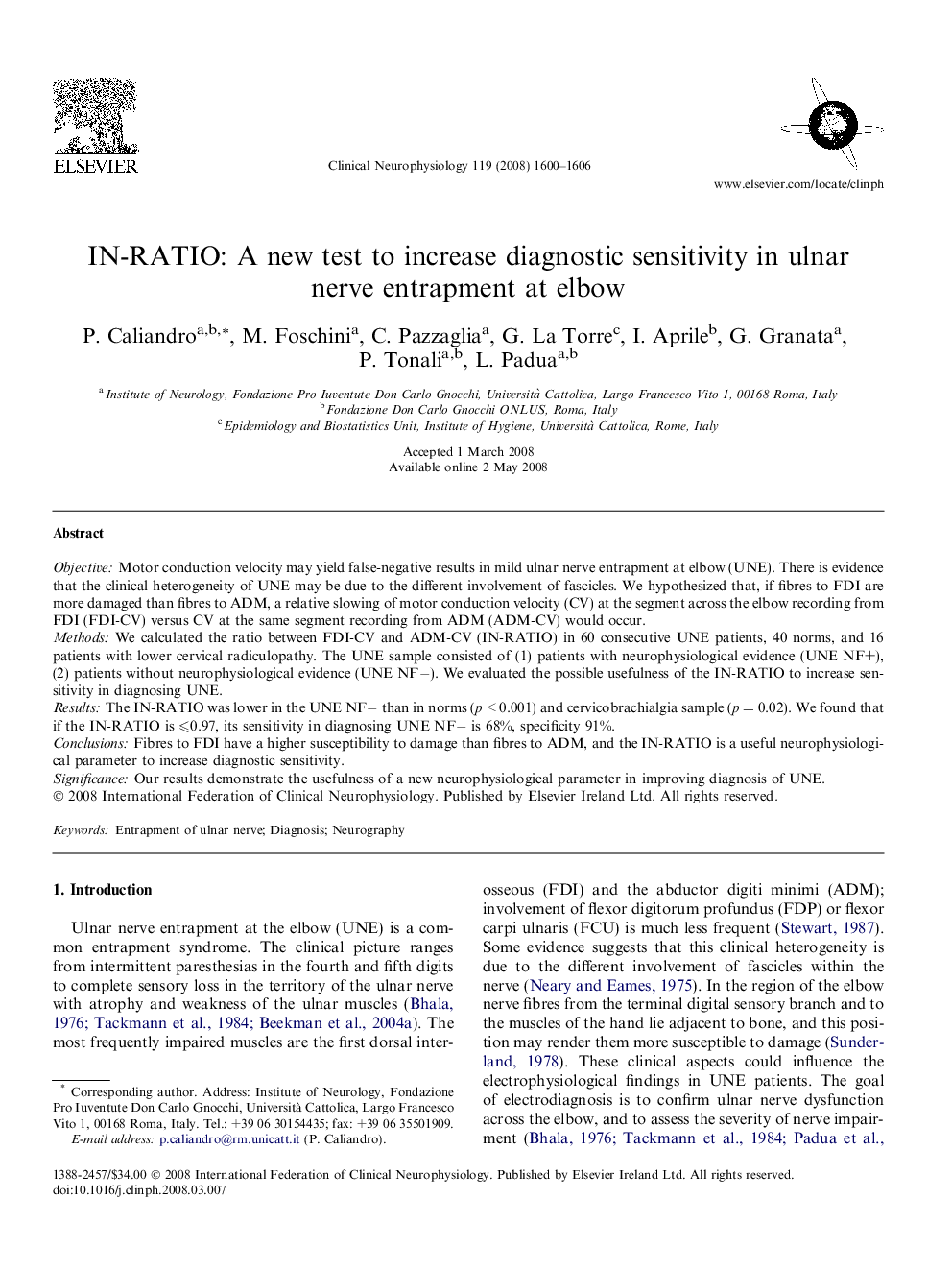| Article ID | Journal | Published Year | Pages | File Type |
|---|---|---|---|---|
| 3047315 | Clinical Neurophysiology | 2008 | 7 Pages |
ObjectiveMotor conduction velocity may yield false-negative results in mild ulnar nerve entrapment at elbow (UNE). There is evidence that the clinical heterogeneity of UNE may be due to the different involvement of fascicles. We hypothesized that, if fibres to FDI are more damaged than fibres to ADM, a relative slowing of motor conduction velocity (CV) at the segment across the elbow recording from FDI (FDI-CV) versus CV at the same segment recording from ADM (ADM-CV) would occur.MethodsWe calculated the ratio between FDI-CV and ADM-CV (IN-RATIO) in 60 consecutive UNE patients, 40 norms, and 16 patients with lower cervical radiculopathy. The UNE sample consisted of (1) patients with neurophysiological evidence (UNE NF+), (2) patients without neurophysiological evidence (UNE NF−). We evaluated the possible usefulness of the IN-RATIO to increase sensitivity in diagnosing UNE.ResultsThe IN-RATIO was lower in the UNE NF− than in norms (p < 0.001) and cervicobrachialgia sample (p = 0.02). We found that if the IN-RATIO is ⩽0.97, its sensitivity in diagnosing UNE NF− is 68%, specificity 91%.ConclusionsFibres to FDI have a higher susceptibility to damage than fibres to ADM, and the IN-RATIO is a useful neurophysiological parameter to increase diagnostic sensitivity.SignificanceOur results demonstrate the usefulness of a new neurophysiological parameter in improving diagnosis of UNE.
